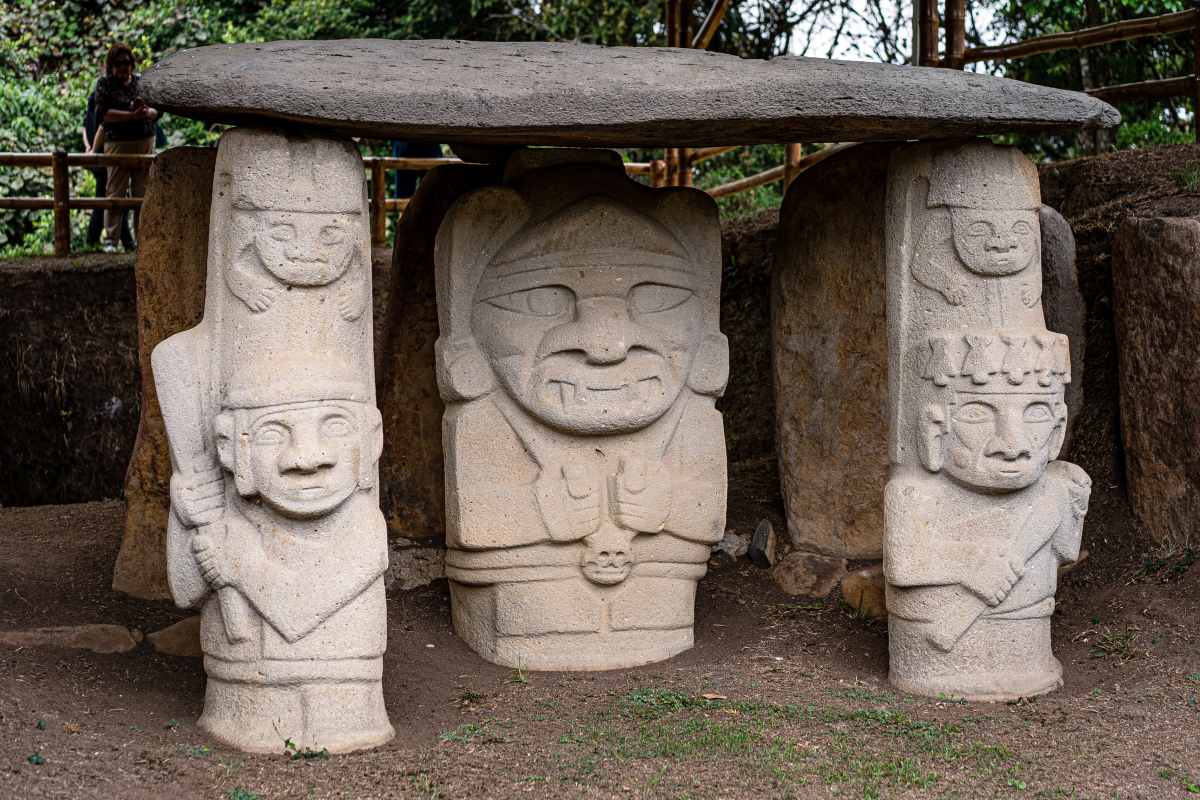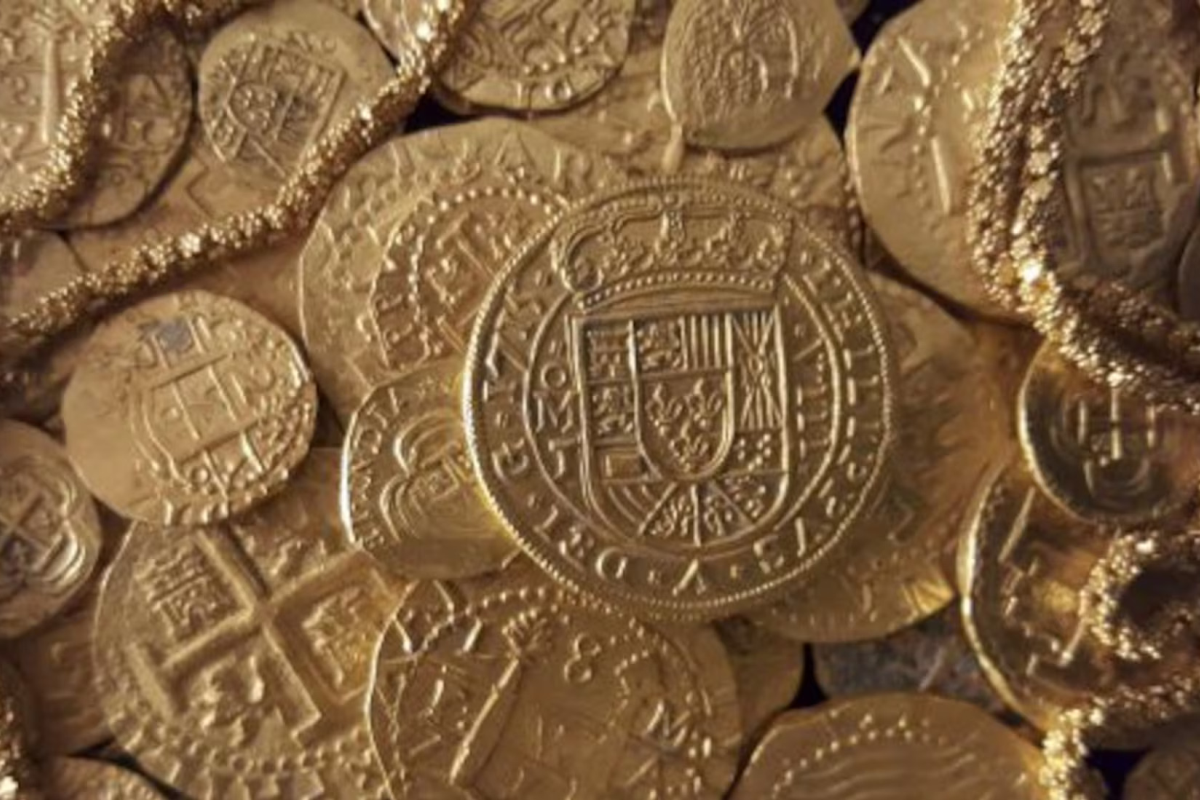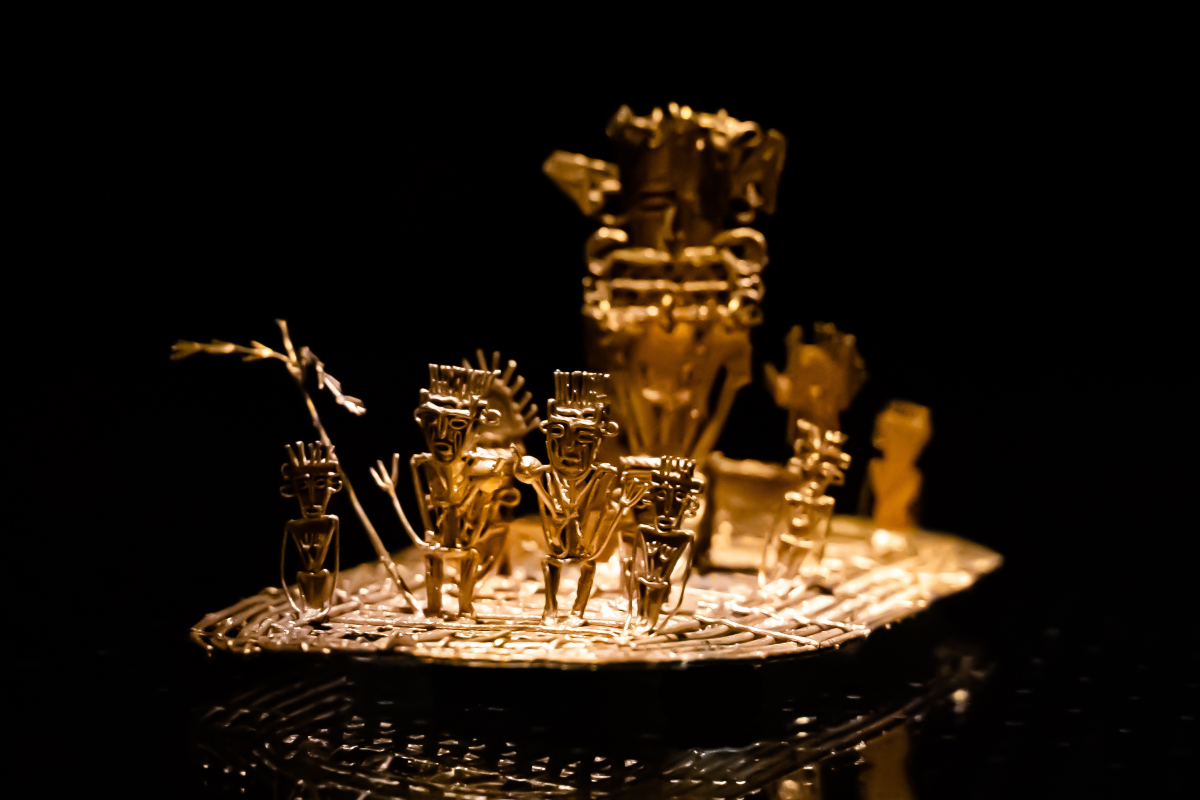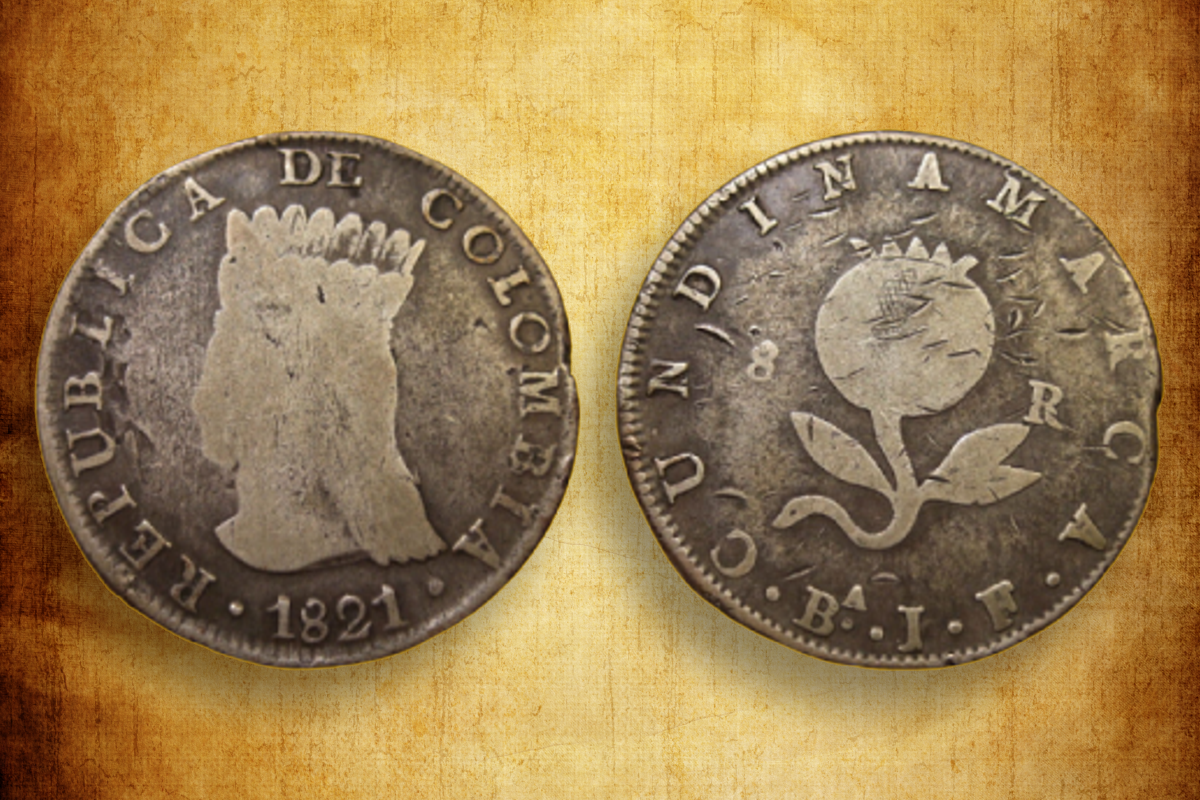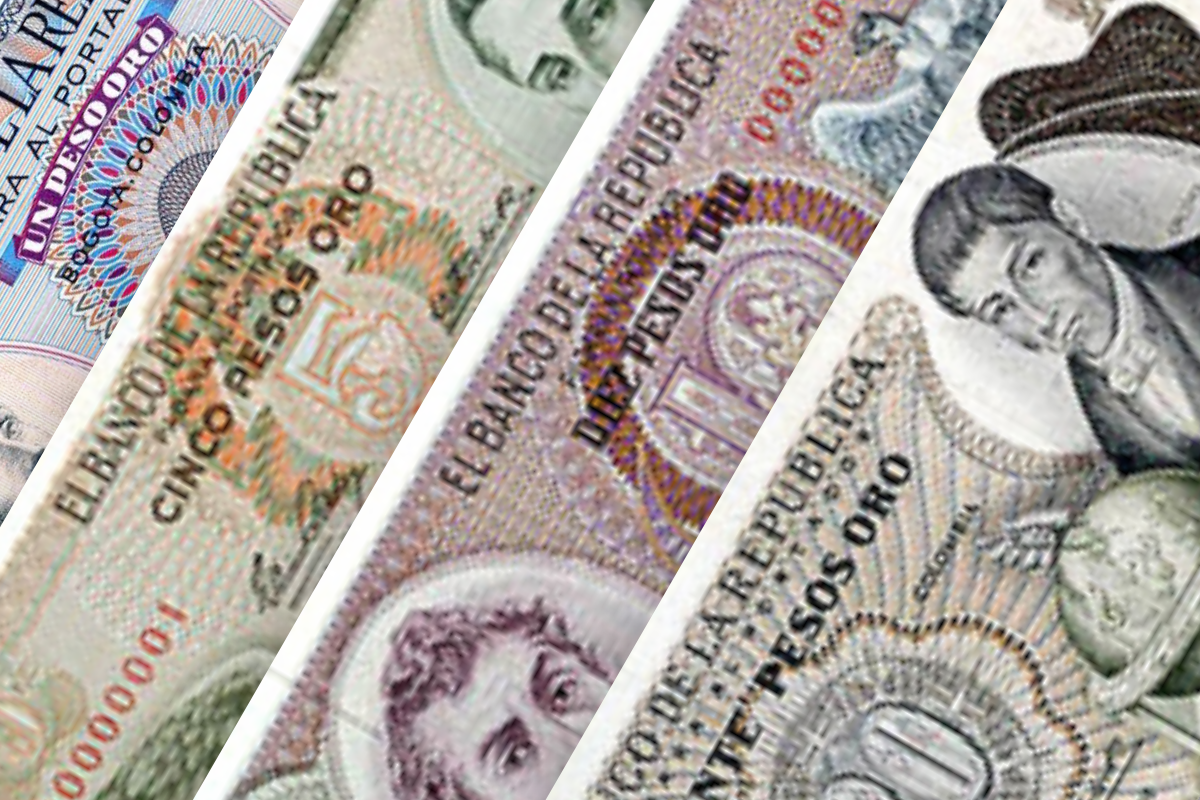Restless numismatic readers:
We're starting a series of historical articles, where numismatics will be the excuse to learn a little more about the history of Colombia and the world.
Join us to learn about these fabulous stories that remain portrayed on banknotes and coins, and that deserve to be told. To begin, there is nothing better than a wonder of Colombia for the world: "The San Agustín Archaeological Park." The story of how we lost part of this heritage, the quixotic struggle of a foreigner (with a Colombian soul) to recover it, and the shameful lack of interest of the Colombian state in recovering our lost wealth.

(Only official representation of the San Agustín archaeological park in numismatics)
First of all, it's worth noting that the San Agustín Archaeological Park is located in the south of the department of Huila and encompasses areas of the current municipalities of San Agustín, San José de Isnos, and Salado Blanco. This site houses a funerary complex with artificial mounds on the rocks and a series of stone monoliths carved into various anthropomorphic and zoomorphic images, which, according to scientific studies, are approximately five thousand years old.

The size of the sculptural work is so magnificent (more than 500 cataloged statuettes) that it is underscored by the lack of knowledge about the civilization that created it. The name, worldview, sociocultural and economic aspects, origin, and purpose of this sculpting people are unknown. So fortunately, this civilization was baptized with the name of San Agustín, after the nearest town.
While it is true that these monoliths have always attracted those who have seen them, regardless of whether they were nationals or foreigners, it is necessary to note, much to our regret, that it has been foreigners who have
They have left a deep mark on the research and dissemination of this wonderful archaeological work and, with a few exceptions, Colombians have had a general lack of interest in these statues.
Thus, the historiography of these remains begins in the colonial era with the Spanish religious Friar Juan de Santa Gertrudis in 1756, who noted the first historical references to these monuments and concluded that due to the lack of metal tools for sculpting and the unnatural shapes of these monoliths, they were possibly demonic works.
In 1857, the Italian geographer Agustín Codazzi explored the region, mapped the archaeological zone and drew several statuary pieces.
In 1892, Luis María Gutiérrez de Alba (another Spaniard) described the archaeological site and proposed its preservation and dissemination to the governments of the day; however, his proposals apparently received no attention.
Saint Augustine, an ancient magical work,
Forged by sublime and secret technique.
Wrapped in centuries of complete solitude.
Wonder of our national heritage.
Treasure that also became universal.
Prodigy that the illegal guaquero threatens
And that the foreign collector grips
Silent giants of carved stone,
Ownership of this sacred land
Witnesses to the talent of our race!
But perhaps the foreigner who has most influenced the sculpting community to date was a German named Konrad Theodor Preuss, an ethnologist, researcher, historian, and scientist, a world pioneer in the study of ethnology. He arrived in Colombia for the first time in 1913 and had a cursory understanding of Saint Augustine and its statues.
Preuss planned to travel through certain areas of Colombia to study indigenous cultures in more detail, with the idea of acquiring more precise knowledge about them and, essentially, obtaining archaeological pieces to create an ethnological museum in Germany.
The circumstances of the First World War forced him to remain in Colombia for a long time; a propitious opportunity to explore the Colombian massif and visit San Agustín and other archaeological sites. There, he took the opportunity to explore, unearth, describe, photograph, capture, list, transport, cut, pack, and acquire possession of several archaeological artifacts. What I haven't been able to find out is whether the national government authorized him to explore and/or investigate or simply turned a blind eye while this German carried out all these actions with our heritage.
Preuss himself describes in detail the difficulties he faced in transporting several heavy loads containing statuettes and numerous archaeological pieces; he places special emphasis on the invaluable help of the strong peasants he enlisted in making the entire journey from Huila to Girardot (Cundinamarca), where he shipped his cargo along the Magdalena River to Puerto Colombia and from there to his final destination in Germany.

Konrad Theodor Preuss
Here it is good to highlight complementary behaviors; indelicate cunning of the German who benefited from his status as an "illustrious foreigner," a connoisseur of archaeology and the law, to appropriate riches whose true value only he knew, without facing any legal consequences. And the lack of interest in our own cultural wealth and the lack of awareness about defending the country's historical and artistic heritage, which allowed Konrad to wander around like "Pedro in his house" with these treasures.
The plundering of our heritage has not been determined exactly, as it seems the German may have sent more than one shipment to Europe. The most likely theory suggests that 21 statuettes and 237 regional artifacts, such as vases, ornaments, slabs, stones, utensils, and sculpture fragments, were stolen from Colombia to form the current Ethnological Museum of Berlin; priceless national treasures that remain in this same German institution today, June 6, 2021.
It seems that no Colombian entity has been interested in visiting this museum, requesting permission to inspect the statuettes, and requesting the repatriation of these archaeological pieces.
Following the course of history and its relationship with foreigners, we jump to the present to introduce you to Mr. David Dellenback (an American more Augustinian than any other), a great connoisseur and promoter of this pre-Columbian culture. He not only produced the most comprehensive book on statuettes from the sculpting community, but in 2012 was one of the driving forces behind the publicity and legal campaign for the repatriation of the statuettes taken by Konrad Theodor Preuss to Germany. Colombians' natural ignorance and disdain for their own cultural wealth meant that for over 100 years no national authority ever requested the return of this pre-Columbian treasure from Germany.
A process in which all the responsible entities, including the Presidency of the Republic, pledged to continue to request the return of our lost treasure. According to Dellenback himself, this case has received no response from the state entities that guarantee the protection of our heritage, apparently. These were empty promises, in the heat of publicity, that the national government made not only to David, but to San Agustín and Colombia. To this day, the people of San Agustín do not know how to recover their heritage.
As children of the same father, the Banco de la Republica shares with national diplomatic institutions and the ICANH (Colombian Institute of Anthropology and History) a lack of interest in the San Agustín archaeological park; thus far, it has only been represented on one banknote.
On November 20, 1935, during the government of President Alfonso López Pumarejo, the San Agustín Archaeological Park was officially founded.

The San Agustín Archaeological Park has been a UNESCO World Heritage Site since 1995 and is an archaeological wonder of the world, a magical and sacred place of pilgrimage where the mysteries of these silent giants intertwine with the beauty of a rugged landscape.
To conclude, and to remind you of the struggle David Dellenback and the people of St. Augustine have waged to recover their heritage, I share these verses of my own authorship.
In 1914, Preuss – a German scientist –
The national government, in the act of admiration
St. Augustine allowed him to investigate and decipher.
Work that he did, but like a scoundrel
Taking advantage of the Teutonic, the confidence and without eagerness
He took it to his native country, without any permission
Monoliths, statuettes, stones… and whatever he wanted.
Treasures that still remain in Germany
And it seems that in Colombia nobody knew...
Until Dellenback warned us.
The government finally joined in its claim
The whole country fighting for the same desire!!
Years have passed since this eager enterprise
There is no answer at all... how disconsolate.
David should not be surprised by this.
And forgive me for being so frank and sincere.
Our cultural heritage is of interest to few.
Here you can see the financial heritage.
However, do not faint in your vigor
Well, you are a spokesperson for Saint Augustine.
Although you come from the land of the beaver.
Leonardo Gómez
Villavicencio, June 11, 2021


